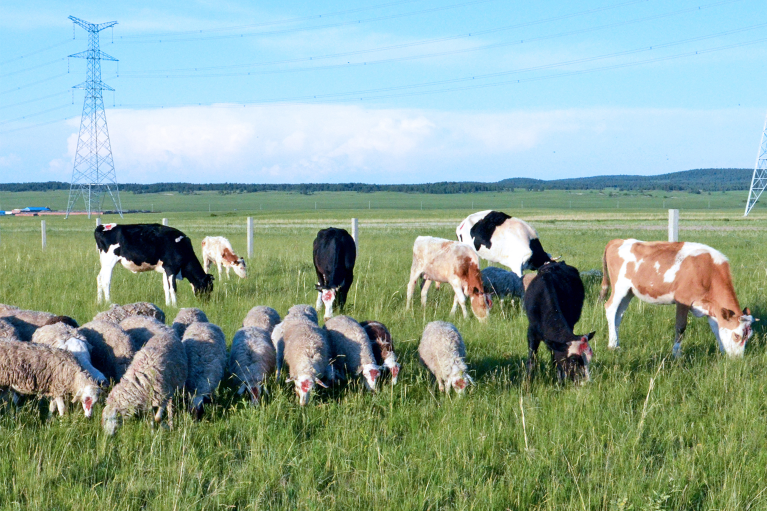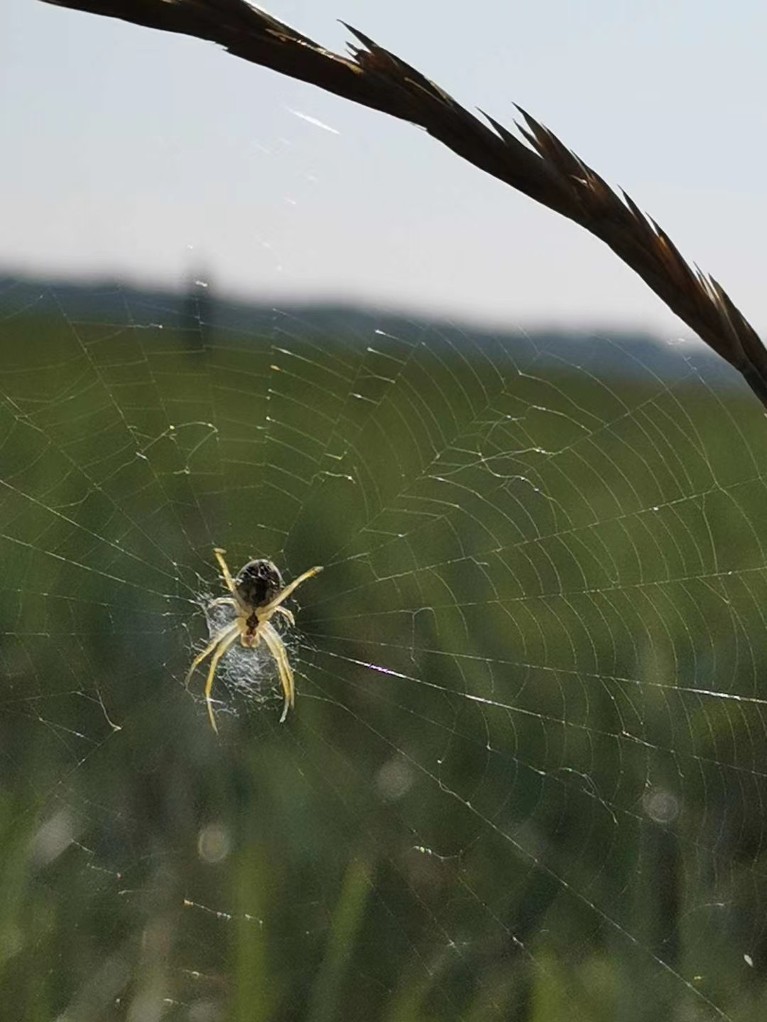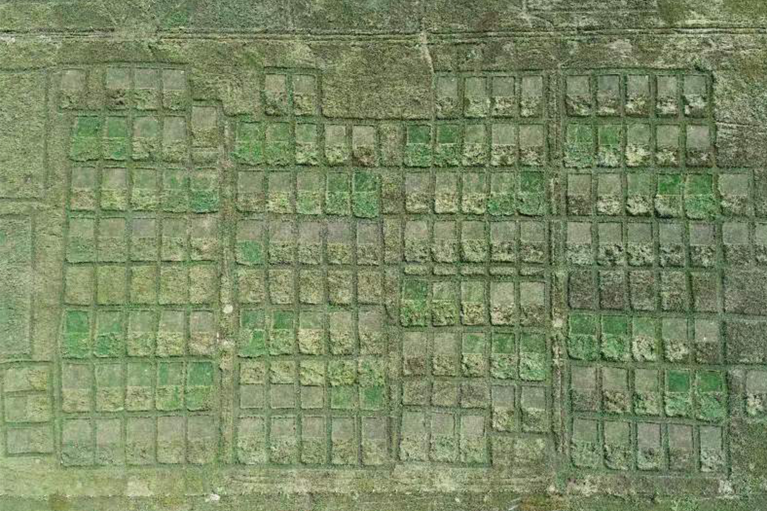
IGS has experimented with mixed grazing of cattle and sheep at Songnen Plain, northeast China.Credit: Northeast Normal University
Research into grassland ecology started at the Northeast Normal University (NENU) in the 1950s when Tingcheng Zhu, founder of NENU’s Institute of Grassland Science (IGS), surveyed the vegetation of marsh areas in northeastern China. Since then, ecological research programmes have developed quickly at NENU. Through cross-disciplinary integration and international exchange, IGS has emerged as a key contributor to diverse research, from species interactions in ecological communities, the impacts of livestock grazing, to climate change.
Rethinking interactions

Arthropod predator-prey-plant food chains are shaped by livestock grazing disturbances.Credit: Northeast Normal University
Grassland studies by IGS are linked with research on the interactions between species, the focus of an IGS professor, Deli Wang. Specializing in ecosystem ecology, Wang’s team explores how human activities (such as grazing, mowing, and nitrogen deposition) affect interactions between species of different trophic levels in a food web. It also considers their impacts on biotic communities, including biodiversity, and ecosystem processes and functions, such as productivity, and carbon and nitrogen cycles.
A highlight of Wang’s work is finding that livestock grazing can change habitat structure, regulating the trophic interactions between predators and prey in the arthropod food web, and between plant-eating insects and plants. Livestock can also have inter-species facilitation with their co-existing insects, contributing to plant biodiversity and productivity.
Grazing and grassland ecology
Livestock overgrazing is widely considered a threat to grassland ecosystems, as selective grazing and trampling may harm biodiversity and damage plants. However, when managed well, research shows, selective grazing can also bring conservation benefits.

Plot sampling reveals the effect of nitrogen and phosphorus application.Credit: Northeast Normal University
By investigating the effects of livestock grazing on grassland ecological structures, processes and functions, along with the regulatory mechanisms, an IGS team led by Ling Wanghas been exploring ways to optimize grazing management, preserving multiple ecosystem functions.
Based on manipulative field experiments to compare grazing variables at northeast China’s Songnen Plain, Wang’s team found that the way to do mixed grazing of different livestock species, such as cattle and sheep, plays a significant role in grazing effects on plant diversity, soil health (including nitrogen cycling, heterogeneity, and carbon flux), and soil’s capacity in storing carbon.
The researchers found that mixed grazing of cattle, sheep, and other livestock can increase grassland biodiversity and versatility. Preserving the biodiversity of insects and plants, as well as underground micro-organisms and nematodes is important for maintaining the multiple functions of grassland ecosystems affected by grazing.
Studying climate factors
Investigating how grassland responds to global changes, particularly, to changed rainfall patterns and their interactions with other global change factors (GCF) is the focus of an IGS team led by Wei Sun, a specialist in plant eco-physiology. “The exploration will provide insights to adaptive management of grassland,” said Sun.
Sun’s analysis of long-term observational data and field experiment results suggests that rainfall patterns are a controlling factor in grassland ecosystems, as they determine the effects of other GCFs, including temperature increase and nitrogen deposition. After prolonged adaptation to interannual changes in rainfall, meadows can develop resistance to short-term drought. Nitrogen deposition can also affect key vegetation features, including the diversity of plant functional groups, root-to-shoot ratio, and leaf area index, which determine how sensitive ecosystem carbon cycles are in response to changes in precipitation patterns.


